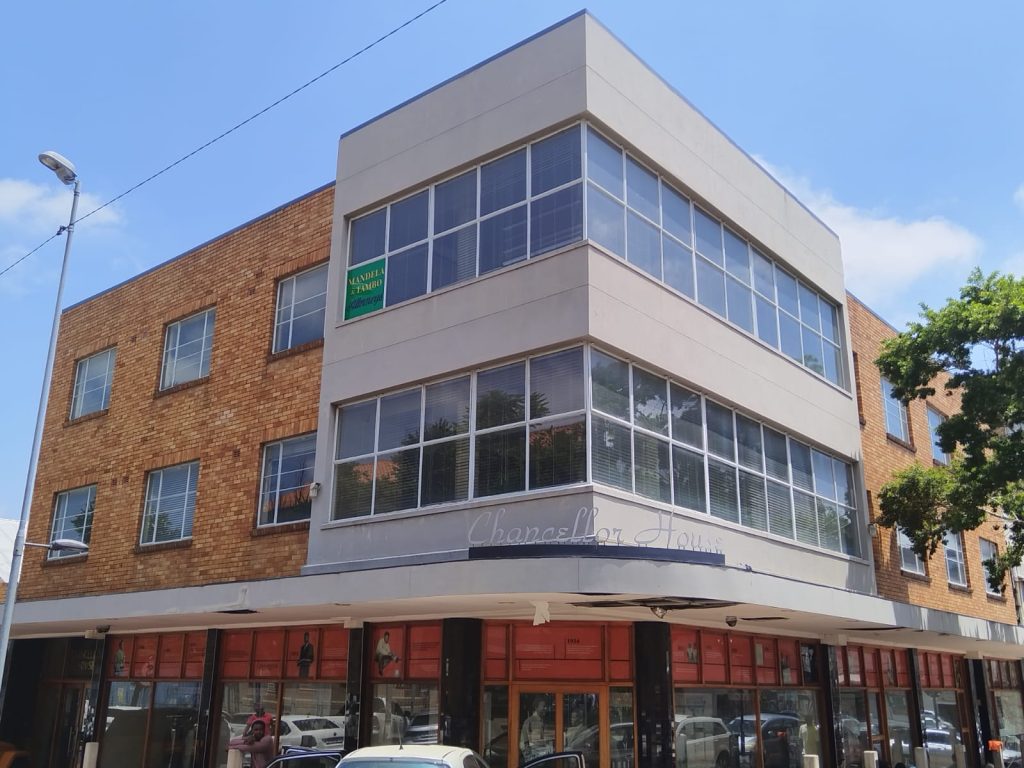The Katyn Memorial stands on a rise in an attractive park setting, in good view from the nearby Atholl Oakland Road. The structure is constructed of bush hammered reinforced concrete with a set of three plaques in red granite. The sculpture theme is derived from ancient Slavic forms assembled to create an interplay of open and solid spatial forms creating the image of the non-existing cross.
The monument was erected to commemorate the Katyn Forest Massacre, in which 14 500 Polish citizens were executed by the Stalin regime of the Soviet Union in 1940. The monument has since been extended to commemorate the Warsaw Flights and Polish Home Army during World War 2.
The commemoration of the Katyn Massacre started out as just a plaque in 1973. Known as the Katyn Commemorating Plaque, it found little support from the National Museum of Military History, as its inscription was viewed as fairly controversial. Despite that setback, the newly formed Katyn Memorial Committee approached the Johannesburg City Council to find a suitable place for its placement.
Professor Stefan Smoleniec was elected chairman of the committee overseeing the planning and erection of the monument. Funds were raised and the City Parks Department helped in providing the venue at the James and Ethel Gray Park. The designers were of Polish origin: Andrzej Romanowicz and Adam Snopek (architects) and Leonard Rynkiewicz (structural engineer). Bishop Szczepan Wesoly consecrated the completed Memorial on 9 May 1981.
Since 1981, following the erection of this monument, the Warsaw Flights Commemoration was transferred from the Cenotaph in the city centre to the Katyn Memorial in Melrose. The service recalls Allied supply flights to bring relief to Warsaw in which 69 South African pilots lost their lives. Slow-moving Douglas DC3 transport planes had to fly at low altitudes through heavy anti-aircraft fire in order to drop supplies in Warsaw.
In 1989, a decision was made to add two pulpits to the Katyn Memorial, from which the sacrifices of South African Airmen and the Polish Home Army soldiers would be annually commemorated. The team of Andrzej Romanowicz, architect, and Karol Golda, structural engineer, prepared the design of extensions. Holes were drilled in the two new pulpits and filled with bullet casings from aeroplane guns containing oil from Warsaw and Katyn. The central stand (Katyn) contains soil from Katyn; in the left one (Polish Home Army), soil was placed from the insurgents’ graves in the Powazki Cemetery; and on the right 9 South African Air Force, soil from the place of the crash of Jack van Eyssen’s Liberator in Michalin near Warsaw. The municipal authorities conducted the excavations in order to level out the ground in front of the monument. The additional pulpits were blessed by the then Mgr Jan Jaworski on 8 September 1990.
Protected under Section 37 of the National Heritage Resources Act: Public Monuments and Memorials.

A culmination of research gathered over many years, the Online Johannesburg Heritage Register is being launched on Nelson Mandela Day 18 July 2025.
Among the many heritage sites featured is Chancellor House, the downtown offices of Mandela and Tambo Attorneys in the 1950s. After having been vacant and shuttered for more than a decade, this iconic building is being revived and brought to life once again as offices for the Community Development Department, which oversees the City’s Arts, Culture & Heritage Services.